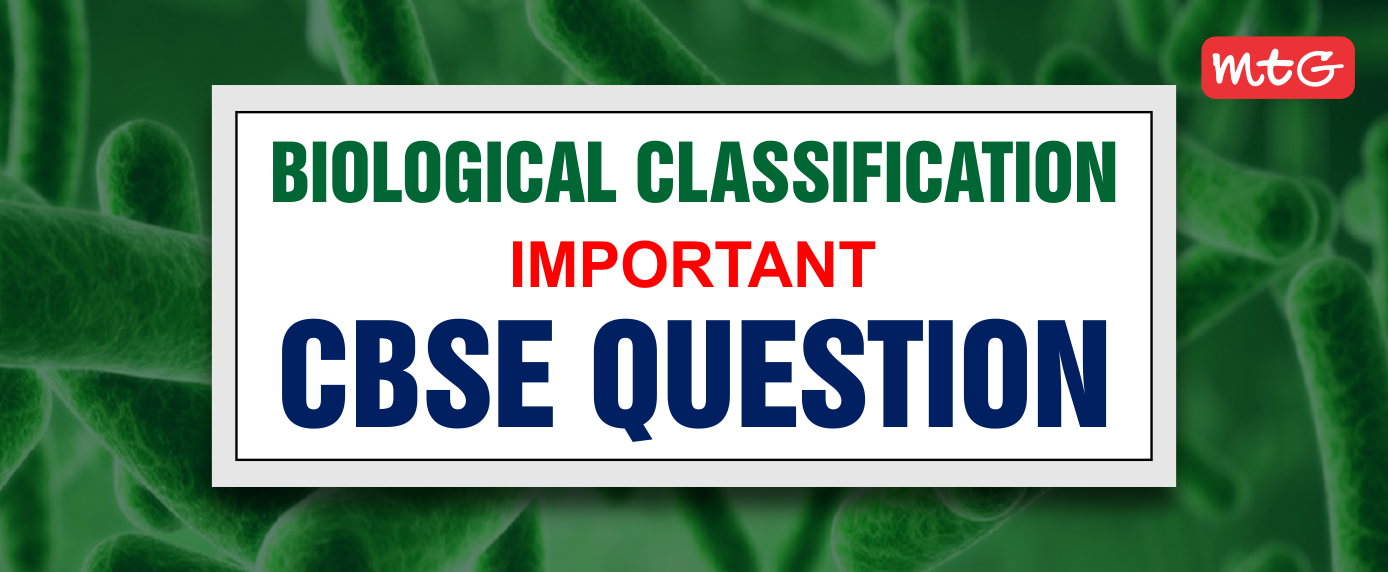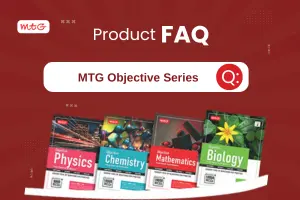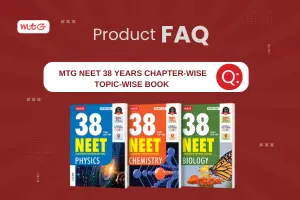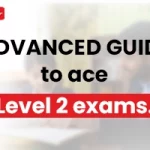
Many important questions are formed in exams like NEET, CBSE boards, from Class 11 Biology Chapter 2. In this chapter Biological Classification, you will get to practice various topics like Kingdom Monera, Kingdom Protista, Kingdom Fungi, Viruses, the Structure of Viruses, etc. Below, we have provided Important Questions PDFs from Class 11 Biology Chapter 2 Biological Classification for your CBSE board preparation. You can check it here or download it later for revision purposes.
Looking to revise Biological Classification? Check – Biological Classification Class 11 Notes for NEET
Biological Classification Class 11 Important Questions and Answers
We’ve compiled a few important questions on class 11 chapter 2 biological classification that you should not miss while studying for the class 11 CBSE exams.
Q.1. Name the genetic material of
(a) bacteriophage
(b) tobacco mosaic virus
A.1. (a) bacteriophage – Double-stranded DNA
(b) tobacco mosaic virus – Single-stranded RNA
Q.2. Raashi on an expedition found a multicellular eukaryotic heterotrophic organism with a non-cellulosic cell wall. To which kingdom according to Whittaker, she should place this organism?
A.2. She should place this organism in Kingdom Fungi.
Preparing for NEET? Check out – Biological Classification NEET Questions and Answers
Q.3. Briefly discuss the importance of diatoms.
A.3. Diatoms are economically important in the following ways:
(i) Diatoms are very important photosynthesisers.
(ii) Diatomite deposits are often accompanied by petroleum fields.
(iii) These are used as a cleaning agent in toothpaste and metal polishes and are used in the filtration of oil and syrups.
(iv) Diatoms are used as insulation material in refrigerators, boilers, and furnaces. These are also used to make sound-proof rooms.
(v) Diatoms are also very good pollution indicators.
You might also like – The Living World Class 11 Notes
Q.4. What are the disadvantages of artificial system of classification?
A.4. The disadvantages of artificial system of classification are as follows:
(i) This system uses only few traits which leads to different organisms being grouped together.
(ii) The artificial system gave equal weightage to vegetative and sexual characteristics; this is not acceptable because often the vegetative characters are more easily affected by environment.
(iii) It separates out closely related organisms.
(iv) It does not bring out natural and phylogenetic relationships.
(v) The grouping is done on the basis of external traits which may appear due to parallel evolution, progressive evolution, or retrogressive evolution.
Also Check out – The Living World CBSE Questions and Answers
Q.5. Enlist the salient features of viruses.
A.5. Salient features of viruses are :
(i) Viruses are non-cellular, ultra-microscopic, infectious particles.
(ii) They are perfect obligate parasites (i.e., parasitic at the gene level) and cannot be grown on artificial culture medium. They are inert outside the host cells.
(iii) They can be precipitated from suspensions and can be crystallised in the form of crystals.
(iv) Viruses are regarded as intermediate between non-living entities and living organisms.
(v) They are highly pathogenic and cause infectious diseases in animals and plants.
(vi) All viruses are nucleoproteins. The nucleic acid is protected by protein coat against attack by nucleaseenzyme.
Assertion and Reason Question for Biological Classification class 11 chapter 2
Q.1. Assertion: Mycoplasma have a cell wall made up of pectin.
Reason: Mycoplasma can survive without oxygen.
(a) Both assertion and reason are true and reason is the correct explanation of assertion.
(b) Both assertion and reason are true but reason is not the correct explanation of assertion.
(c) Assertion is true but reason is false.
(d) Assertion is false but reason is true
A.1. (d): Mycoplasma do not possess cell wall.
Biology Chapter 2 Biological Classification Questions and Answers PDF
No one can go against the fact that NCERT is the most important textbook for any class in CBSE. And there’s no doubt that if a student is well-versed with the NCERT textbook then they will score well. Since NCERT is the most important textbook for CBSE, students should have NCERT solutions handy. NCERT Solutions Biology book for class 11 serves as a single platform for all the answers to questions given in NCERT Textbook Biology. The book is composed of a well-defined solution to the questions asked in the NCERT Textbook with well-labeled diagrams and flow charts for conceptual learning.
Moreover, a student looking to also solve NCERT exemplar can refer to NCERT Textbook + Exemplar Problems-Solutions Biology book. This is the ultimate resource for students, as it serves as a one-stop solution for the answers to all the questions covered in the NCERT Textbook and in the NCERT Exemplar book. Students will get answers to all kinds of objective and subjective questions in a single book. Easy to understand Solutions are provided by MTG experts. The book is highly recommended by CBSE boards, Olympiads, and NEET.
Hope you liked these questions, Stay tuned for more questions and answers as we will update this page in the future.





























